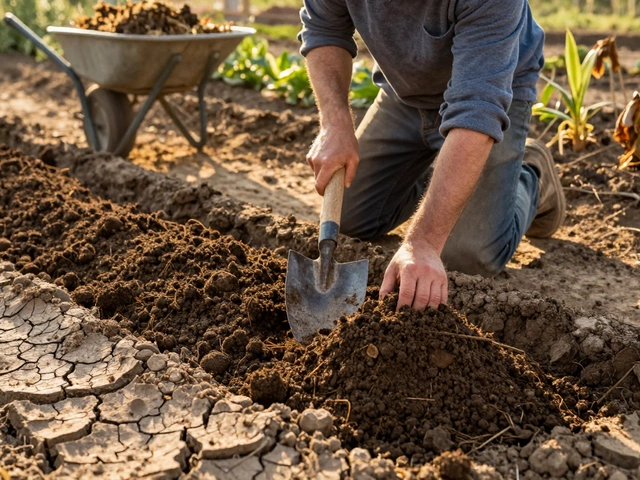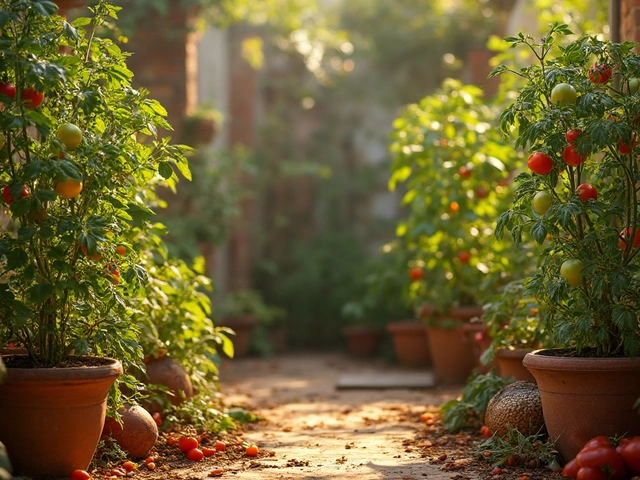Ever dealt with a drip irrigation system that just won't cooperate? It's pesky clogs that turn a neat system into a gardener's nightmare. Keeping those little emitters flowing smoothly is key to ensuring your plants stay happy and hydrated. So how do you keep them from jamming up?
First, you gotta know what causes all those clogs in the first place. Often, it's debris or mineral deposits sneaking in and causing trouble. Sometimes poor water quality or lack of a good filter system is the real culprit. Sorting out these issues can make a huge difference. Let’s dive into some handy tips and tricks to keep your drip irrigation running like a charm.
- Understanding Drip Emitter Clogs
- Choosing the Right Filtration System
- Regular Maintenance Tips
- Water Quality and Its Impact
Understanding Drip Emitter Clogs
Alright, let's get into the nitty-gritty of why those drip emitters keep clogging up. Knowing what gets in the way can save you tons of time and hassle. The usual troublemakers are tiny particles, mineral build-up, algae, or even pesky bugs that try to make a home inside your irrigation lines. Imagine it like a traffic jam in a water pipe—nothing gets through, and your plants don't get watered.
One of the biggest reasons for these clogs is poor water quality. If the water you’re using is full of sediments or loaded with minerals like calcium, it can create build-ups over time. Bonus tip: hard water can be especially tricky! It’s like adding carbs to your diet without running; things get blocked up.
To make matters worse, if you skip on maintaining your system, those minor issues can quickly become a major headache. Just like a car needs oil changes, your drip irrigation system needs some TLC. Keep tools handy to check and clean out emitters regularly.
Let's not forget about the importance of a good filter. It’s your first line of defense against debris sneaking into your system. A top-notch filter traps particles before they even get a chance to cause any trouble. Think of your filter like the bouncer at a club who keeps things in order.
Here’s a quick look at some common clog contributors:
- Debris from the soil or air
- Mineral deposits from hard water
- Algae growth due to moisture
- Insects and tiny critters
Getting a handle on these issues can seem daunting, but once you know what's causing the problems, tackling them becomes way easier. Keep reading to learn how to keep those emitters free and clear, ensuring your garden stays lush and green.
Choosing the Right Filtration System
Let's get real here—if you're dealing with drip emitters that keep clogging, your filter might not be pulling its weight. Picking the right filtration system is like setting the stage for a smooth, no-fuss watering routine. It all starts with understanding your water source and its potential impurities.
If you’re pulling water from a well or natural source, chances are you’ve got some sediments and fine particles in there. That’s where screen filters come into play. These babies are perfect for blocking out larger bits and keeping your system running smoothly. They're easy to clean too, which is a big win!
For those with more stubborn minerals or tiny bits of debris, disc filters might be your new best friend. They provide finer filtration and are great if you need that extra level of protection. Plus, their cleaning mechanism is like a DIY project—remove the disc stack, rinse it, and you’re good to go!
- Screen Filters: Best for larger particles. Easy maintenance.
- Disc Filters: Ideal for finer debris. Simple to clean and maintain.
Thinking about bag filters? They’re excellent when your water source throws a mix of both large and fine particles at you. Though they might require more maintenance, they shine when consistency is your top priority.
Ultimately, your choice of filter needs to match what’s in your water. Cheaper isn't always better, as you'll save more time and hassle in the long run with the right gear. Trust me, your drip irrigation system will thank you!

Regular Maintenance Tips
Keep your drip emitters in tip-top shape with some straightforward maintenance tricks. Think of it like giving a little love to your plants’ lifeline. A bit of regular care goes a long way in preventing those dreaded clogs.
First up, let's talk cleaning. Regularly flushing your system is crucial. This means opening the end caps and letting the water run free for a few minutes. This simple act can wash away a lot of potential troublemakers. Aim to do this at least once a month.
Check your filters often. A clogged filter can lead to clogged emitters. Clean or replace it as needed. Filters are usually where debris gets stuck first, so giving it a look-see every couple of weeks can save you headaches.
Inspect your emitters regularly. Take a walk and see if each is dripping as it should. If one looks suspiciously dry, it might need a bit of cleaning out. A gentle poke with a thin wire can clear minor blockages easily.
Don’t neglect the pipework. Checking the tubing for kinks or signs of wear and tear is just as important. Replace any damaged pieces pronto to avoid more significant issues down the line.
Here’s a neat little checklist:
- Flush the system monthly
- Check and clean filters bi-weekly
- Inspect emitters regularly
- Look for and fix tubing problems
Consistency is the name of the game. Running these checks regularly keeps your drip irrigation system running smooth, prevents clogs, and gives you peace of mind knowing your garden's getting what it needs.
Water Quality and Its Impact
You'd be surprised how much water quality can mess with your drip irrigation setup. Think about it: if you've got hard water full of minerals, you're bound to end up with clogged up emitters eventually. Just imagine all that calcium and magnesium building up inside those tiny passages. And this is not just about minerals. Even dirt and algae can creep into the system if your water isn't top-notch.
So how do you make sure your water's not causing problems? One key step is testing your water source. Get a simple water test kit; it's like a quick check-up for your garden. Believe it or not, even rainwater can sometimes have impurities depending on where you live.
Adding a filtration system is another smart move. Drip systems thrive when they're paired with good filters that can trap sediments and other pesky bits. According to one irrigation expert, "A reliable filtration system is like the backbone of a healthy irrigation setup. Without it, you're just asking for clogs."
"A reliable filtration system is like the backbone of a healthy irrigation setup. Without it, you're just asking for clogs." - Dr. Jane Waterman, Irrigation Expert
Here's a quick breakdown on what to look for in a solid filter:
- Mesh filters for sandy water.
- Disc filters for water with lots of organic matter.
- Screen filters for general dust and debris.
And of course, keeping your drip emitters in line will also mean staying on top of any algae issues. Some folks add a little chlorine or even vinegar every once in a while to keep things clean and moving smoothly.
Ultimately, knowing what's in your water and taking action to manage it can save you loads of hassle. So, check your water regularly, opt for solid filtration, and keep your system squeaky clean for the best results.





